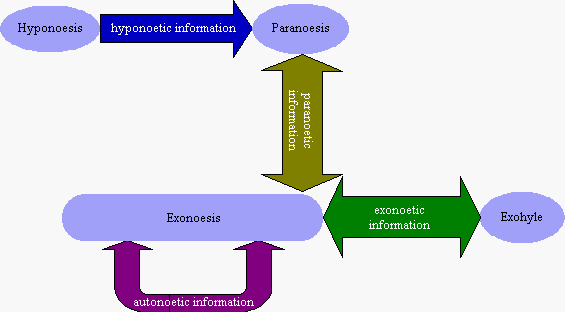
Information is a semantic unity. Something becomes information through the agency of a human mind. Information is construed and not discovered or just deduced. Once a human mind states something within the framework of a language, it becomes available information, which can be local or non-local. Local information is local to its carrier, such as the memory or a book. Non-local information is extraneous to something or somebody. Normally, I can't access information that is not resident within the memory of my brain or recorded, for example, in a book.
We have to distinguish between private and public information. Private information is information that is not accessible to anyone else than its carrier or agent. Public information is available to anyone who has the ability to access that information, such as a reading ability. Private and public information can be local as well as non-local depending on the point of view.
Another distinction is applicable too: information can be definite or indefinite (patent or latent, actual or potential respectively). Definite information is information that is somehow recorded in a publicly available medium, such as a book. Definite information is explicitly articulated and by that very process is instantiated as information in the first place. Indefinite or latent information is potentially expressible information which has not yet been formulated explicitly, such as a particular state of being in which a person currently is, or an undiscovered fact of nature in science.
Latent information is not actual information, because it has not yet been expressed within the semantic framework of a human language. However, it is something that is potentially capable of being expressed. Therefore it counts as potential information.
The philosophical question here is whether it is possible to access non-local potential information and by that very act construe local actual information (or definite, patent information). Referring to our normal faculties of our mind we have to deny that question. However, since we do not fully use the capacity of our mind, there is a great probability that there exists a faculty of the mind that is capable of accessing that kind of information. I call that faculty "Transrational Thinking" or "Paranoesis".
Paranoesis enables us to access potential information that is non-local, thereby construing new publicly available information. This potential information is not limited to the present time (time as experienced by human consciousness), but includes the past as well as the future. The latter entails that the world is either deterministic or predestinated.
Another kind of information is what I would like to call Paranoetic Information. It is information that is not accessible to rational or analytical thinking, i.e. it cannot be directly translated into human concepts and language. However, this kind of information can be accessed directly through the agency of Paranoesis or Transrational Thinking, a new faculty of the mind that transcends rational thought and therefore also surpasses language.
Even though this paranoetic faculty can access this kind of information and understand it, however in a different way than our intellect does, this information can still be translated somehow into the conceptual language. This translation does entail a certain loss of the original scope and significance of the paranoetic information. The concept-less information is transformed into limited concepts. This presumes the superiority of the mind over the limitations of language or purely conceptual thinking. Our mind is capable of more than just conceptual thinking. For example, feelings transcend conceptuality and are therefore not clearly expressible in words or clear-cut concepts. This limitation of conceptuality (or language in general) does not mean that our mind is actually constrained by that limitation. On the contrary, our mind is potentially infinite and if we would develop the capacities of our mind properly we could access paranoetic information easily.
To distinguish between the actual information and the potential or the "un-formed" information I call the former Noemata and the latter Anoemata. Noemata according to ancient Greek philosophy are the objects of thought, that is, actual information. Anoemata, a term coined by myself, represent potential structures that become manifested as Noemata or information either directly through conceptual thinking or Transrational Thinking (Paranoesis). The latter accesses paranoetic information, which is nothing else than the above mentioned Anoemata. Transrational Thinking is the bridge between the actual world of rational and conceptual thought and the potential world of Hyponoesis. Although we access information in Hyponoesis involuntarily through unconscious and subconscious mechanisms, Transrational Thinking is the only faculty that allows controlled and conscious access to paranoetic information.
Levels or Degrees of Information:
- exonoetic information: knowledge about the world and other selves
- autonoetic information: self-knowledge, self-consciousness
- paranoetic information: knowledge that transcends rational and conceptual thinking. Only available to Transrational Thinking.
- hyponoetic information: potential knowledge that cannot be accessed directly, but only through the faculty of Transrational Thinking, where it becomes paranoetic information.
- hylonoetic information: knowledge of ourselves as a unity of body and mind.
